S&OP MasterClass™
AI in supply chain: beyond the buzzwords
Welcome to this S&OP MasterClass.
These MasterClasses have the purpose of diving into Integrated Business Planning and Supply Chain Planning in general, hopefully giving you some good inputs on the way.
922411929
AI in supply chain planning
You know that AI is transforming supply chain planning. But can you differentiate buzzwords from business?
In this deep dive episode, Søren Hammer Pedersen and Stephan Skovlund guide you through the transformative journey of AI in supply chain planning.
From the basics of AI and machine learning to the sophisticated use of language models like ChatGPT, we uncover the layers of AI applications that are revolutionizing the industry.
Get insights on how AI enhances operational efficiency and redefines strategic planning and decision-making processes in supply chain management.
Whether you’re a novice eager to understand AI’s potential or a seasoned professional looking to integrate AI technologies into your operations, this episode is your gateway to the future of supply chain planning.
Key takeaways:
- The role of ChatGPT and AI in transforming supply chain planning
- Key benefits of integrating AI into supply chain strategies
- Practical steps for beginning with AI in supply chain planning
- The impact of AI on sales forecasting and customer service
- Overcoming challenges and leveraging AI for optimal results
Your host is Søren Hammer Pedersen with guest Stephen Skovlund, both from Roima Intelligence.
The podcast is produced by Montanus.
Relevant links from the podcast
In This Episode
Listed below are the most essential timestamps from the podcast episode to make it easier for you to find the topics that interest you.
00:08 Introduction by Søren Hammer Pedersen
01:05 Stephan Skovlund's background and expertise
02:00 Discussing the impact of ChatGPT on AI perception in supply chain
07:24 How AI benefits supply chain planning
16:05 Utilizing language models in supply chain and inventory planning
21:36 AI in customer service as an extension of the chatbot
24:54 Round off of conversation
Full Episode Transcription
Søren Hammer Pedersen (00:08):
Hello, everybody. Warm welcome to this S&OP MasterClass from Roima. My name is Søren Hammer Pedersen, and I’ll be your host for this masterclass here today.
(00:18):
The purpose of these masterclasses is that we dive into trending, hot topics within supply chain planning, try to give you our perspective on things, and hopefully some tricks along the way that you actually can use in your own company. And today's topic is no different. We are looking into AI and supply chain planning, and of course, unless you lived under a rock for the past couple of years, you'll have heard a lot about this. But what are the consequences for you in supply chain planning and what can we do about it? That is the topic today.
(00:51):
But it's not just going to be me rambling here for the next half hour or so. I have been joined in the studio by my very good friend and colleague, Stephan Skovlund, who will give his perspective on things. Welcome, Stephan, to the studio.
Stephan Skovlund (01:05):
Thanks a lot, Søren.
Søren Hammer Pedersen (01:07):
But before we dive into the topic here today, people might not have stumbled upon Stephan before, so could you please-
Stephan Skovlund (01:15):
What? Surprising.
Søren Hammer Pedersen (01:15):
... give a few words on who you are and what are your background for diving into this topic?
Stephan Skovlund (01:20):
Absolutely. My name is Stephan Skovlund, and I'm the co-founder of a company that was later acquired by Roima, and I've been working for the past 15, 20 years in the field of supply chain and with statistics before that. Before working with the startup company I was teaching statistics, and before-before that I was working for Carlsberg with demand planning and supply planning.
(01:51):
A lot of data and a super interesting times to live in here with the AI starting up. So it's going to be a nice discussion today, I'm sure.
Søren Hammer Pedersen (02:00):
Good. And it seems like you have a lot of daily relevant experience with this topic here, but let's maybe start by setting the scene here before we dive into the actual supply part of it. AI is not a new thing. It's been around for quite a while now, but it seems like somebody flicked a switch some time ago and now it's everywhere. What has generated this massive interest in your opinion and why is it so relevant?
Stephan Skovlund (02:29):
Well, I think for obvious reasons, the ChatGTP that came some years ago in November has definitely flipped the switch, but it's important to remember that AI has been existing for many years, and has been also implemented with success for many really highly relevant use cases such as scanning images for tumors, for example, for hospitals, detecting illnesses. We have all seen it with Amazon with the book recommendations and so on. So it has been something that has been live and functioning, but it has been a bit behind the curtains, you can say.
(03:12):
When OpenAI came back and started up with the ChatGTP, I think it was in 2022 in November, that was really the rocket public launch of AI. I think it took OpenAI about two months to get about 100 million users. Just to put things in perspective, it took Facebook about four and a half years to get the same amount of users. So it's just to say that it has been really, really rapidly accelerating for the past couple of years.
Søren Hammer Pedersen (03:46):
It might be an obvious question, but I always ask anyone sitting in this chair this question, because we have the why should the supply chain professional actually care? We have ChatGPT, but why should we care within supply chain?
Stephan Skovlund (04:00):
Yeah, it's a good question. I think it is very easy when you look at ChatGPT to think that it can be relevant for almost any use case. It's so agile and it's so, you can say, cross-border in the way you can ask it all sorts of questions.
(04:17):
But I think as a starting point before diving into is it relevant for supply chain and how is it relevant, a good way of thinking about it is to get an overview of AI and think about it in terms of the different models that we have. As a first model, one of the most popular model, is the language models, the large language models. That is like at ChatGPT. You frame or you ask questions and then you get a summary or an advice or something that has to do with text. Not only text, it can also be data analysis, it can be drawings. These language models are multimodal, so that is really interesting.
(04:56):
But that's a certain kind of AI model. Then you have data models, like machine learning models. They are more oriented towards working with numbers, pattern recognitions in data. They are more niche focused on this area, but they're very good at making predictions. And then as a third category, you have image classification models, which are good at detecting images, facial recognition. But they are also very much applied in quality inspections, for example, in companies where you need to detect the issues with quality issues.
(05:32):
But I think as a common denominator for all these models, it's quite funny to think about that in very oversimplified terms, it's very much built around the same concept, and that is regression analysis. If you remember back in the early days from school, probably awful memories in statistics, but nevertheless, when we think about regression, the concept is really simple. You have two variables, let's say temperature and the sales of ice cream. And you then create a model that best possible depicts that relation between those two variables.
(06:08):
So when we talk about AI, we can talk about it in the same context. We can just add many more variables and, you can say, expand the amount of complexity we have, but increase the precision of the model. So here, instead of just talking about temperature, we could talk about the location of the ice cream shop, we could talk about the time of the day, we could talk about the wind, the rain, all these kinds of variables.
(06:31):
But at the end of the day, it's a model that assign weights to these variables and optimize these weights to minimize the error, is another way of saying that, to improve the accuracy of the model. But it's all centered around the principle of regression, highly simplified. So these are the three main categories of AI models.
Søren Hammer Pedersen (06:51):
Yeah. But it sounds like, of course, from a supply chain planning perspective, there could be many utilizations of AI. So where do you actually start? Let's say we have a blank canvas here within supply chain planning, you are looking to go into this. Do you just download the ChatGPT and then get started? It doesn't sound like that's the approach. Where do you start in your opinion or where would be a good place to look at first?
Stephan Skovlund (07:24):
That's a good question. I think when you look for areas where you can apply artificial intelligence, a good way to start is to look at areas that require lots of data, areas that require analytical capability, critical reasoning. And also areas where you are doing something repetitively because these are typically quite labor-intensive.
(07:56):
So these areas that relate to what I just mentioned here could easily be demand planning, for example, in supply chain. Here you are dealing with lots of data. It constantly is something that needs to be updated. You need to focus on outliers, you need to clean data. All these areas cannot, in my view right now, be fully automated, but can be supported by AI. Then you also have inventory optimization, you have capacity planning, you have route optimization.
(08:23):
I think there are so many areas that the better question is probably where is it not relevant? I mean, where can we not use AI in supply chain? Because at the end of the day, supply chain is very much driven by data and this is where the AI comes in.
Søren Hammer Pedersen (08:40):
But I actually think that what you mentioned here at last, that is one of the things that could be a bit scary if you are starting to look into this because AI can be applied everywhere. So where to start is of course a relevant question. But I think what I hear you say is you need to have an initial analysis of, "Okay, my supply chain, my planning, all those kinds of things, where are the areas that I would probably want to apply this and have an effect," and not have the approach that you would apply it everywhere at once?
Stephan Skovlund (09:15):
No, I think it's a very good question and I will talk a little bit about this later on. But the idea is that when you deal with AI, some of it is very new, like the language models are relatively new. Some of it is very old and are very proven in terms of concept and what they have created in the past, such as machine learning for example.
(09:39):
So the question very much comes down to are there any low-hanging fruits? Are there any areas in your supply chain planning where you can start using AI without over-complicating things and still getting a lot of benefit out of AI. Because I think, as a starting point, most of the people I talk with are inte rested in getting the feet wet, just starting off, but they are a bit relaxing to doing so because they don't know where to start.
(10:10):
I would say looking in areas where you have proven AI methods, methods that have not just worked for a few business cases but have really been proven on also academic research and the likes. So if I had to really dig in on some of these areas, I would say that a natural candidate will of course be forecasting. Sales forecasting is one of the oldest disciplines in the world, I guess it goes thousands of years back in time. And the methodologies for working with sales forecasting are also very old. And actually, AI machine learning is a very old concept. And there's been a lot of competitions on websites like Kaggle for example, where a lot of people are competing for improving forecast, and here machine learning has been done very well.
(11:02):
So machine learning is interesting for sales forecasting, but it's very important to think about machine learning in different terms than when you think about forecasting traditionally. Because when you work with machine learning ... Let's just make it very simple, let's take an example. Let's say we are looking at an item that has a level of seasonality. So there is low season in the beginning of the year, and there is high season at the end of the year.
(11:31):
Now, if we go about this challenge with a traditional statistical approach, we can use like a moving average or an exponential function. No matter what, we will end up with two parameters. We will end up with the dates and we will end up with the sales. And we'll probably do this on a monthly bucket. When we work with machine learning we cannot do it the same way, because with machine learning we need to frame the problem a bit different. We need data on a more granular level. And the reason we need this is because machine learning fundamentally works very different from traditional statistics.
(12:05):
What would happen if we gave data on a daily level to a machine learning model, the first thing it would start to do is to see if there are correlations on a daily level. So if Monday is correlated with the other Monday, the three Mondays back in time and so forth. But it will also aggregate the dates on different time dimensions. So it will aggregate on week, on month, on quarters and years, and so on. Just like a ladder, it can work across time dimension in ways in traditional statistical models cannot do. So this is super interesting.
(12:42):
And the reason this is interesting is that there are a lot of hidden patterns in data for companies. No matter if you work in fast-moving consumer good companies or if you work with spare parts, across most industries there are patterns that are very difficult to detect. For example, in this season example I gave you, if you have a factory shutdown the third week every year in February, for example, that is not something you can see on a monthly level, but it become very visible when you look at it on a granular level, on a weekly level, you can catch that. Also, for example, some items don't have seasonality on a monthly level, they have it on a quarterly level, and that is also something you would miss if you look at it on a monthly level.
(13:25):
So the advantages of machine learning are very clear when it comes to finding patterns, and this is why it's so attractive. The disadvantage is that it complicates things and it's more prone to overreact because there is so much data that goes into these models.
Søren Hammer Pedersen (13:42):
Yeah. There's definitely, within sales forecasting, an area here where AI can be applied and a very good place to look.
(13:52):
And I guess also, if we just stay on that topic just a while, because I think sales forecasting always something that interesting our listeners a lot. I guess also one thing is finding all the patterns within given time, but I guess the AI also focuses a lot on external factors and finding leading indicators or new leading indicators that could potentially improve both our sales and financial outlooks. How do you view that as an option coming in?
Stephan Skovlund (14:23):
I think it's a really good question because most of the time when I am asked about this, there is this assumption that in order to work with machine learning in AI you need external data. So you need the data from inflation, you need data from weather, you need data from all kinds of area externally.
(14:44):
But in my experience, this is not always true because if you start, and this is something I would always advise people to do, when you start with AI, start with scoping the data so it doesn't become too complex. For example, in the example we just talked about with seasonality, you can get very far with just two variables when you talk about machine learning. From the get-go it doesn't sound like you have enough data, just looking at sales transactions on a daily level. But the point we're missing here is that machine learning doesn't see it as one variable, it actually sees the date as perhaps 10 variables because there are many mutations and variations of that variable. So you can get very far with just limited dimensions.
(15:31):
This is what I would say to people if they are thinking about using external variables, always try to use internal variables first and see if that gives you some results. And then you can increase the complexity afterwards. But keep in mind that the minimum requirements needed for AI is a good place to start. If you start by just saying, "We can just work with lots of data," you are in for an interesting project, but it's not sure it's going to end up-
Søren Hammer Pedersen (16:00):
Maybe long project, as well.
Stephan Skovlund (16:02):
It's not sure it's going to end up a good place.
Søren Hammer Pedersen (16:05):
No, no. I think that's good advice that even though it is daunting and appealing that you can just flick a switch called AI and then everything works, there's probably some more thought going into it. And of course that's also what many companies are looking at at the moment. So check mark with the sales forecasting and demand planning, one area that could be very good to start with.
(16:29):
In a broader context within supply chain planning, other areas that you see that you can give some example of how could this be utilized?
Stephan Skovlund (16:39):
Absolutely, yeah. It would be a bit cheap if we just stopped there because I don't think the forecasting is a surprise to anyone. But I think an area that is really interesting and will have lots of impact and is relatively easy to implement, is talking with your company data. So when talking with your company data, I'm talking about language models, about chatbots, generic chatbots that you can implement on top of your SQL databases in a company.
(17:09):
Just to give you a bit of context. Most of the data in companies are residing in SQL databases, but not many people in companies are able to code in SQL. So typically companies are working with business warehouses, they're working with Tableau, Excel, Power BI and so on to retrieve data. But in reality, you can implement a language model, like an open source. It doesn't need to be OpenAI, ChatGPT. You can actually get those open source. Google just made one called Gamma. There is another one called Mistral.
(17:43):
These are very powerful and actually quite small chatbots that you can implement in a company local so it doesn't leave the company, it stays on premise. And then you can start using this as a chatbot on top of your database so you can query the database directly. And that enables all of your workers actually to talk in plain language and get the data, the summaries, the stories about all the data that you have, in a very easy fashion.
(18:15):
And since this is open source, the costs are not crazy and it's not something where you need to train the model a lot, because of course it needs to know if you call sales, if that is called actuals, for example. It doesn't know that. So there is a very limited training that goes into that. But apart from that, it's something you from the get-go can get a lot of value out of.
Søren Hammer Pedersen (18:36):
And let's say we set that up within a company, what kind of work processes becomes much easier than in your planning? Is it going through every item or any SQL you have in the system, or where is it that you apply this?
Stephan Skovlund (18:55):
I think it has a very broad value. It is supporting ad hoc analysis. A lot of analysis in companies is ad hoc, the nature of that is ad hoc. You see something that goes wrong, you want to understand it and you go into Excel. But a much faster way of this would be to go into this chatbot and just ask it, "Where can I get this data and please summarize it for me for the past five months? What have the forecast accuracy been? Where is it in terms of gross profit in all these areas?"
(19:26):
So it's not just about summarizing data in a simple way, it's also actually about merging data from different data sources. You could actually see what is the accuracy, not in quantities, but maybe in gross profit, where are the fastest growing items? So it kind of makes it a much broader playground for analysis, and it makes that accessible for a lot of people.
Søren Hammer Pedersen (19:49):
I think many companies have set up their processes around alerts in different ways or parts of their planning. Would these models, these techniques, also come in and maybe improve some of the alerts we see in the planning processes?
Stephan Skovlund (20:08):
I think alerts is a slightly different beast because alerts is ... It depends on how you think about alerts. Typically, when we think about alerts, we think about creating a threshold, and if something goes beyond that, you trigger an alert, so that is one thing. But one thing that alerts are not very good at catching grey zones. They cannot operate in grey zones, it's black or white-
(20:29):
It's black or white.
Søren Hammer Pedersen (20:29):
I know, yes.
Stephan Skovlund (20:29):
Black or white. So the power of those models are their critical reasoning ability. They can go in and see patterns that are emerging but are not yet triggering an alert, so that is a very powerful ... But this is a more complicated area, and it takes more time to fine-tune these because they need to know what is a grey zone and what are the kinds of patterns that are important to catch, but not triggering an alert.
Søren Hammer Pedersen (21:01):
So there is a benefit, but it's a bigger project if we're-
Stephan Skovlund (21:03):
It is, yes. Yes. And also, it's always like a cost approach because there is endless opportunities of fine-tuning AI today. And some of it is really, really resourceful in terms of training, fitting data and so on, so it's a balance. But the example with the language, translate that to SQL code is easy and doesn't require a lot of training.
Søren Hammer Pedersen (21:35):
Okay, interesting.
Stephan Skovlund (21:36):
But a final example I would like to give you and one that I think would have a very significant impact, is customer service. Customer service is an extension of the chatbots. With the chatbot I talked about before, it's plain vanilla. It's kind of an out-of-the-box solution that I was talking about here. With the customer service we are talking about taking a language model, also out-of-the-box, but we are talking about training that.
(22:03):
And the reason that is, you can say, can be very valuable is that there are lots of companies spending a huge amount of time talking about spare parts and advising customers and responding to inquiries and so on. But they also have a history, and all this history can be used to train these language models. So I'm not saying that we can just fully automate responding to customers' requirements, but we can make a proposal, a suggestion, of how this answer could be. And that would in itself be very, I think, valuable.
(22:39):
An example is Klarna, the Swedish financial company that makes these payment solutions. They have just not fully automated, but worked with AI for customer support and reduced I think it was about 70% the time it took for making these answers, and at the same time improve the quality. So there is definitely potential there also.
Søren Hammer Pedersen (23:01):
Okay. Very, very interesting. I think it's very good advice to both what you said in the beginning, about not going crazy big AI, but focusing in on the areas that you think that could have an effect and maybe start with the three you have here. Demand planning, talking to your data, and customer service are three really good areas to start with.
(23:22):
Maybe a final question on ... I guess, since you're sitting in this chair you're actually quite pro AI, but in your opinion, from a supply chain professional's perspective, what could be achieved here? Is it worth the effort, is basically what I'm asking here.
Stephan Skovlund (23:40):
I think it's inevitable to see how AI is going to impact supply chain. Simply speaking of the type of tasks that we are doing in supply chain, there are many natural candidates for AI. So I think companies in general should start getting their feet wet in this area, but doing it in the right way.
(24:09):
And this is back to my point before, the sequence of starting off with these projects is really important because there is lots of hype, lots of buzz about how AI can help you in thousands of different ways. But for many companies, it's out of their budgets. For many, especially small and medium-sized companies, without AI departments, without a lot of people being able to help them, this is interesting but it's not really on their plate.
(24:39):
I would definitely say don't forget about AI, I mean, still try to implement it. Just go down the more simple route, and then start talking to a data and maybe also start thinking about machine learning for forecasting, which are proven areas.
Søren Hammer Pedersen (24:54):
Yeah. Perfect. Stephan, I can see that our time is running here, but it's such an interesting topic, and luckily we have another session coming up because two questions that are I think really relevant and that we are going to dive in next time that I would be thinking about was of course, am I ready for AI basically, and where are the pitfalls here? What do I really need to be aware of when starting this process? So I look forward to having that discussion in the next session with you.
(25:26):
And to all of you listeners out there, thank you so much for tuning into this S&OP MasterClass here today. We will continue, this is a two-parter, as I said. But of course, as always, if you are interesting in knowing more about these topics or anything within supply chain planning, you are always free to reach out to us at and Roima and Perito IBP. We are more than happy to talk to you and see how would this fit into your organization. But thanks for now. Hope you join us next time on the S&OP Masterclass. Bye.














